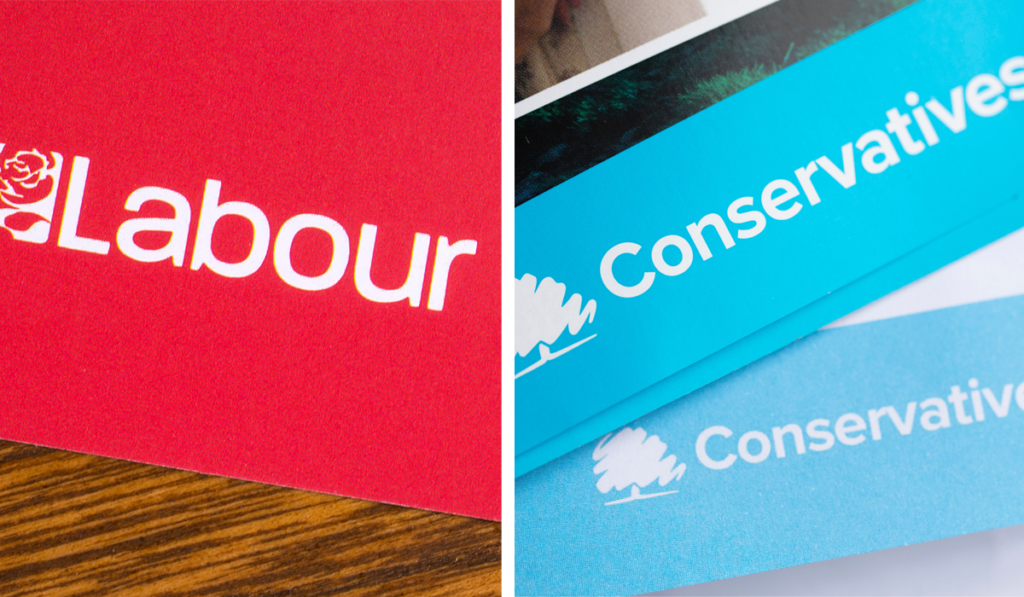
With the Labour and Conservative party conferences taking place at the beginning of October, it became apparent where both think the electoral battle lines can be drawn come the next General Election.
With a change of government currently having a strong whiff of inevitably, PHPD gathered some thoughts from those active in the sector.
At the Conservative event, Sunak opted to address the ‘war on the motorist’, outlining his views on LEZs, clean air zones, and the power of local authorities to make the motorist’s life a misery. Much of this was handwaving, given that no new policies followed yet – given many Conservatives reckon they hung on to Uxbridge in the July by-election thanks London Mayor Kahn’s ULEZ introduction – it seems a line he will pursue.
 And while Michael Gove popped up to deliver a speech on housing (see Wavensmere’s comment opposite), there was a strong sense that the Conservative heart is no longer in it.
And while Michael Gove popped up to deliver a speech on housing (see Wavensmere’s comment opposite), there was a strong sense that the Conservative heart is no longer in it.
The opposite was quite the case for Labour and, to misquote a former Labour prime minister, Starmer was all about housing, housing, housing; and with a huge emphasis on brownfield and the Green Belt.
Karen Charles, executive director, Boyer
The high priority given to housebuilding at conference set the issue firmly at the top of the political agenda. The Green Belt is now over 70-year old and covers 13% of the UK, surrounding 14 of the country’s 20 largest towns and cities, mostly, but not exclusively, in the south.
Few would argue for the abolition of the Green Belt, but its value would be increased if its strictures were softened. The broad-brush approach has led to land which could benefit from redevelopment being over-protected. Contrary to a belief that the Green Belt is a bucolic ring of countryside open to all, much of it is inaccessible and preserves unattractive edge-of-settlement brownfield sites which have potential for sustainable development.
In declaring war on NIMBYism, Starmer has positioned himself as a YIMBY (Yes In My Back Yard) and diametrically opposed to the opposition. This is controversial and, if Labour wins the general election by gaining seats in Tory strongholds, it will be interesting to see to what extent he can remain so staunchly pro-development.
Labour has set out an ambitious programme of planning reforms yet if Starmer forms the next Government, he will have to start making changes from day one. A term of five years is a short period when it comes reforming the planning system, speeding up the preparation of Local Plans, reviewing the Green Belt, creating New Towns and more than doubling housing output.
Roger Mortlock, chief executive, CPRE
There is lots to welcome in Labour’s brownfield-first approach and the densification of our towns and cities. The Labour leader is right to highlight that un-adopted Local Plans are leading to speculative, unsustainable development which are ‘potholing’ the Green Belt and our countryside.
Brownfield land can provide room for 1.2 million new homes and before we start thinking about a new generation of New Towns, we need to make sure we’ve exhausted the un-tapped potential of brownfield land.
The Green Belt will be critical to deliver solutions to the nature and climate crisis. While sustainable development on brownfield land in the Green Belt can be part of the solution, we challenge the idea that ‘grey’ belt land should include areas of scrubland that should be restored to enhance nature support natural solutions to the climate crisis.
James Dickens, managing director, Wavensmere Homes
It was interesting to hear Michael Gove, the Secretary of State for Levelling Up, Housing and Communities, reiterate that delivery of one million new homes is still the aim for this Parliament. Planning and pre-construction delays are likely to result in half the targeted 300,000 new homes per year being completed during 2023, exacerbating the housing crisis.
Getting housing delivery back on target is unlikely to be achieved without developing on the greenbelt, which is where political battlelines are being drawn, ahead of next year’s election.
Unlocking brownfield land requires a highly experienced, specialist team. We are handing over the keys for over 500 new houses and apartments before the end of this year – on brownfield sites which have previously been vacant for decades. Subject to planning, we will be breaking ground on another five major regeneration schemes next year to deliver much-needed city living and community amenities. While Wavensmere Homes’ ethos is in-line with the current Government’s stated aims, it is not the full solution to tackling the UK’s housing crisis.
Claire Petricca-Riding, head of planning and environment, Irwin Mitchell
What the country needs is a vision, a strategy showing a new direction after the cancelling of HS2 or what some have described as ‘cancelling the future’. What Labour says it will provide is the framework to build a new Britain and at the heart of it will be the increase in housing – providing a safe home for all generations – to get Britain building over the next decade: a decade of national renewal.
The plan? To create 1.5 million homes over the next Parliament – to buy or rent – with communities having a say on how these homes should be delivered.
This will mean a new generation of New Towns near cities and the release of land in the not so green – all the shades of grey – green belt as well as providing additional powers to local authorities and establishing a new presumption in favour of development or a ‘planning passport’ on brownfield if design principles are met.
It is certainly a bold statement from the opposition – selling a vision and strategy – ‘Together we fix tomorrow’s challenges today’.
Ian Barnett, national land director, Leaders Romans Group
If you were to ask a typical person whether they wanted to see more Green Belt, and whether they wanted more homes to be available for younger and homeless people, they’d answer ‘yes’ to both. And this is not impossible – the Green Belt can be extended, and more land released from it for housing if suitable land was released.
A review of the Green Belt is long over‐due. But a review does not necessarily mean a reduction in the Green Belt. It means that areas worthy of protection are included, and some are potentially repurposed, and quite possibly in such a way that increases their aesthetic value.
We must move away from images of ‘concreting all over the Green Belt’. The idea that housing developments are primarily ‘grey’ may have been true of post‐war development when the Green Belt was introduced but is not today.
As a result of changes in approaches to development today, new communities have the potential to be attractive, primarily ‘green’ spaces which significantly boost both the aesthetic and biodiverse qualities of the land.






